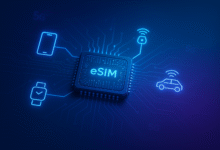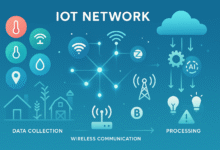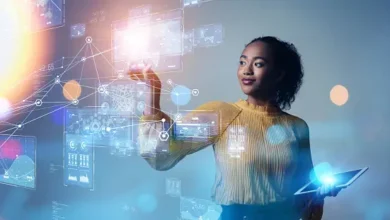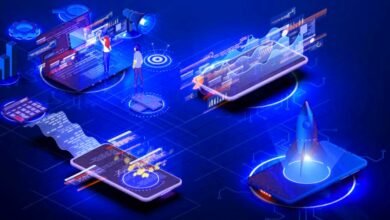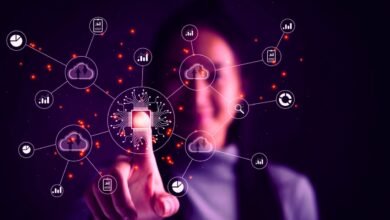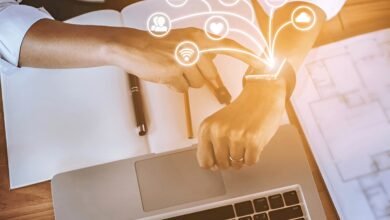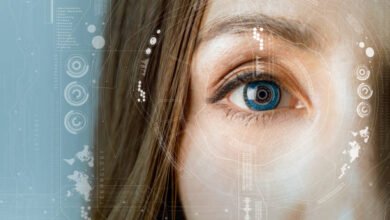
The convergence of the Internet of Things (IoT) and the Metaverse is shaping a revolutionary digital frontier, where the physical and virtual worlds merge seamlessly. This fusion introduces a new digital layer—a dynamic space where data-driven insights from real-world environments power immersive, interactive virtual experiences. As businesses, developers, and users look to unlock the full potential of both technologies, understanding their synergy becomes critical.
Understanding the IoT and the Metaverse
To appreciate their combined impact, we must first define these two transformative technologies.
The Internet of Things (IoT) refers to the interconnected network of physical devices embedded with sensors, software, and other technologies that collect and exchange data with other devices and systems over the Internet. These devices range from household appliances and industrial machines to wearable health monitors and smart city infrastructure.
On the other hand, the metaverse is a collective virtual space created by the convergence of virtually enhanced physical reality and physically persistent virtual reality. It is an evolution of the Internet into a fully immersive, three-dimensional digital environment where users can work, play, socialize, and engage in commerce.
While these concepts evolved independently, their intersection opens up unprecedented possibilities. The IoT provides the sensory input and data flow, while the metaverse offers the interface and immersive environment to interact with that data.
Bridging Physical and Virtual Worlds
One of the primary roles of IoT in the metaverse is to act as a bridge between the physical and virtual realms. Sensors in the physical world continuously collect data such as temperature, movement, location, and biometric metrics. This data can be transmitted in real-time to the metaverse, allowing users to interact with digital twins—virtual replicas of physical objects or systems.
For example, a factory equipped with IoT sensors can be replicated in the metaverse. Managers and engineers can walk through a virtual version of the facility, identify potential issues, monitor real-time metrics, and even make adjustments without being physically present. This enhances operational efficiency and enables predictive maintenance, reducing downtime and costs.
Digital twins powered by IoT not only mirror their real-world counterparts but also provide the added advantage of simulation and testing in a risk-free environment.
Enhancing Immersive Experiences
Another significant contribution of IoT to the Metaverse is the enhancement of immersive experiences. Devices like wearables, smart clothing, and haptic feedback suits are all part of the IoT ecosystem. When integrated with the metaverse, they enrich user interactions by adding sensory feedback and real-world data to virtual experiences.
Consider fitness in the metaverse. A smart fitness band can track a user’s heart rate, body temperature, and physical activity in real-time. This data can be reflected within a metaverse gym where the virtual trainer adjusts the workout based on live input. The feedback loop between physical performance and virtual guidance results in a more personalized and effective training session.
Similarly, in gaming and social experiences, IoT-enabled haptic devices can translate virtual events into physical sensations, making the metaverse feel more tangible and engaging.
Real-Time Data Integration and Responsiveness
The success of the metaverse hinges on its ability to deliver real-time, responsive experiences. This is where IoT plays a pivotal role. Sensors, beacons, and smart systems provide up-to-the-second data that fuels interactions and updates within virtual environments.
In smart cities, for instance, IoT infrastructure can report real-time traffic conditions, energy usage, and public safety updates. This data can be visualized in the metaverse for planning, analysis, and citizen engagement. Urban planners might explore digital replicas of neighborhoods to model infrastructure changes before implementing them physically.
This kind of real-time data integration not only makes the metaverse more accurate and informative but also elevates it as a tool for decision-making, simulation, and strategy.
Enabling Intelligent Automation
With IoT devices acting as data collectors and the metaverse serving as an interface, intelligent automation becomes feasible on a larger scale. AI-driven systems can analyze data from IoT sensors to make smart decisions, which are then executed through the metaverse environment.
For example, in a smart home scenario, IoT sensors might detect that a resident is feeling unwell through biometric data. AI algorithms in the metaverse could notify medical personnel, adjust room conditions for comfort, and alert family members—all within a visually immersive interface.
This combination of IoT, AI, and the metaverse fosters autonomous systems that are proactive rather than reactive, providing value across healthcare, logistics, manufacturing, and even education.
Revolutionizing Commerce and Retail
Retail is undergoing a radical transformation, and the integration of IoT in the metaverse is accelerating this change. In virtual storefronts or digital malls, IoT devices can track user preferences, movement patterns, and engagement levels to optimize product placement and customer experiences.
Imagine walking into a virtual store where your past purchases, size preferences, and browsing history—collected through IoT wearables and smart devices—instantly customize your shopping experience. Smart shelves and IoT-powered inventory systems ensure that the digital catalog is always up to date.
This level of personalized, data-driven commerce not only boosts sales but also enhances customer satisfaction and loyalty.
Boosting Industrial Efficiency with Digital Twins
Industries such as manufacturing, oil and gas, logistics, and construction are seeing enormous benefits from combining IoT and the Metaverse. Digital twins are not just limited to product development—they now encompass entire processes and supply chains.
Using IoT-enabled machinery, businesses can create a full-scale replica of their operations in the Metaverse. These simulations help in identifying bottlenecks, testing new configurations, and training employees in a virtual but realistic environment. Workers can use AR and VR headsets to interact with this data-rich Metaverse layer, improving both safety and productivity.
Such cyber-physical systems blur the line between simulation and operation, making innovation more agile and data-informed.
Creating Smarter Healthcare Ecosystems
The healthcare sector stands to gain significantly from this convergence. With IoT devices like smartwatches, glucose monitors, and fitness trackers gathering continuous health data, the metaverse can create a virtual health ecosystem that supports preventive care and remote diagnostics.
Doctors can meet with patients in a metaverse clinic, reviewing real-time biometric data, medical history, and lifestyle indicators gathered via IoT. Patients, in turn, can participate in therapy sessions, support groups, or rehabilitation programs—all from their homes but within a shared digital space.
This holistic integration of data and immersive interaction redefines patient care by emphasizing accessibility, personalization, and continuity.
Security and Privacy Concerns
While the benefits are vast, integrating IoT into the Metaverse also raises significant challenges—particularly in the realm of security and privacy. IoT devices are notorious for being vulnerable to cyberattacks. When these devices feed into immersive environments like the metaverse, the potential impact of breaches multiplies.
Personal data, biometric records, and real-time behaviors can be exploited if not properly protected. Ensuring end-to-end encryption, blockchain-based data integrity, and robust authentication protocols will be essential to building trust in this new digital layer.
Furthermore, regulatory frameworks must evolve to govern the ethical use of data within these hybrid environments.
The Role of 5G and Edge Computing
To support the bandwidth and latency requirements of an IoT-powered metaverse, next-generation connectivity is essential. This is where 5G and edge computing come into play. 5G offers high-speed, low-latency connections necessary for real-time interactions, while edge computing processes data closer to the source—minimizing lag and optimizing performance.
Together, these technologies ensure that data from IoT sensors can be rapidly integrated into the metaverse, maintaining a seamless user experience without bottlenecks.
Building the Infrastructure of Tomorrow
As we look ahead, the metaverse will evolve beyond a collection of virtual worlds into a persistent, unified digital layer that overlays our physical environment. IoT will be the sensory foundation of this layer—feeding it continuous, contextual, and actionable data.
To build this infrastructure, collaboration across industries is crucial. Technology providers, developers, policymakers, and user communities must align on standards, protocols, and open architectures. Only then can we realize the full potential of an IoT-enabled metaverse.
Conclusion: The Future Is Phygital
The fusion of IoT and the metaverse is not a distant vision—it is happening now. This integration creates a “phygital” world, where physical and digital realities are interwoven to deliver richer, smarter, and more responsive experiences.
From transforming industrial workflows and redefining retail to revolutionizing healthcare and entertainment, the new digital layer powered by IoT is setting the stage for the next chapter of human interaction with technology.
As this ecosystem matures, those who invest early in understanding and leveraging the synergy between IoT and the Metaverse will be well-positioned to lead in this new era of digital transformation.
